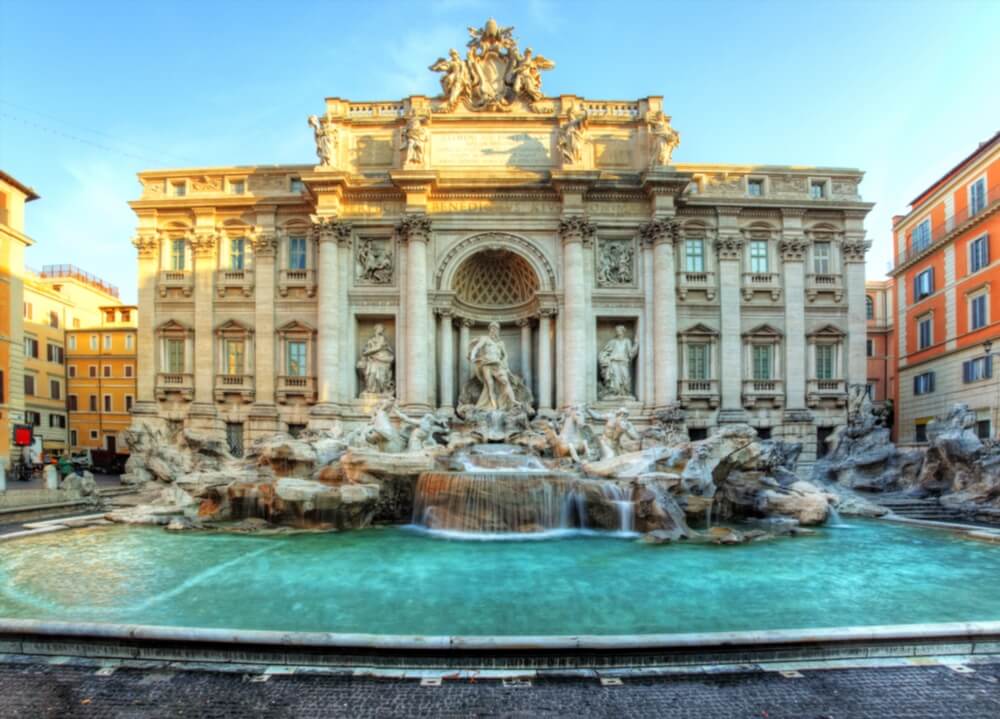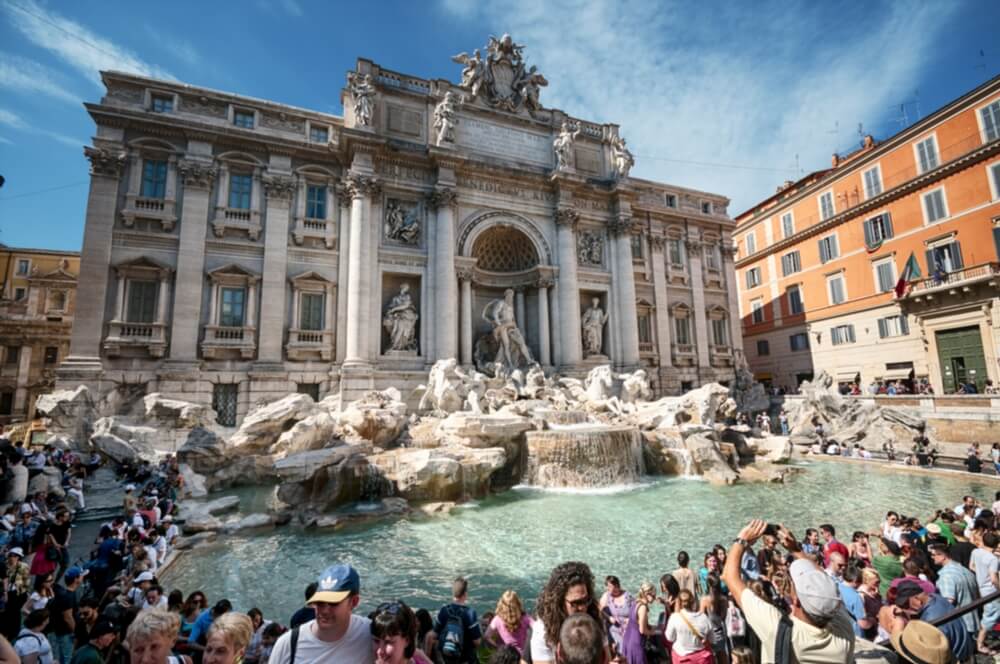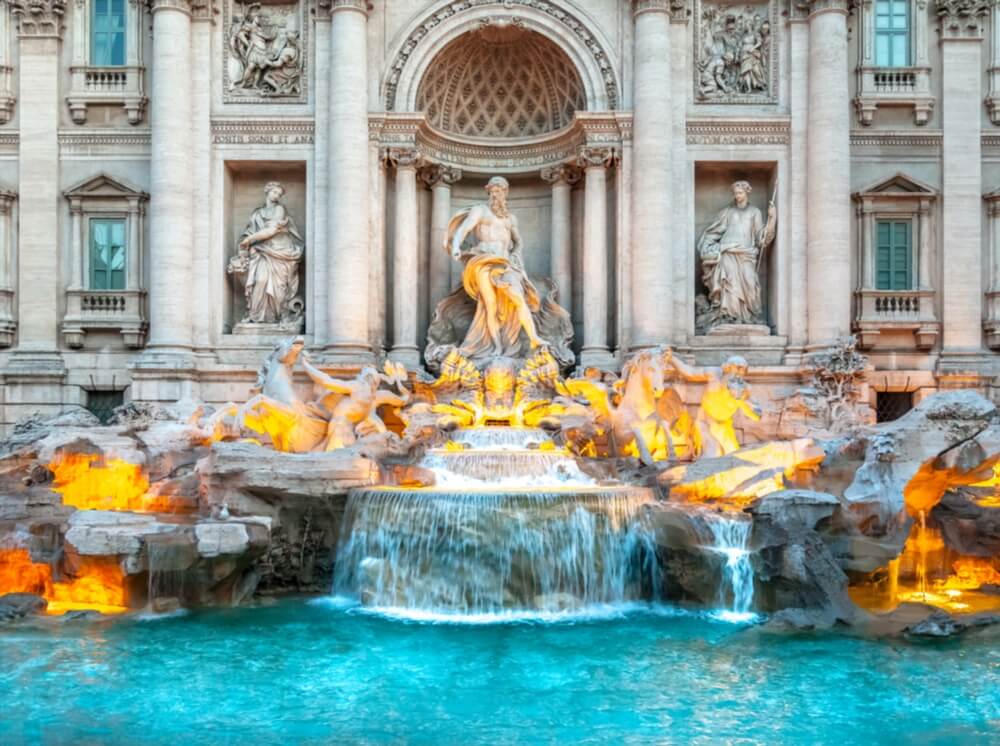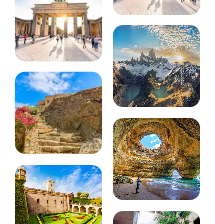Find out all about the Trevi Fountain in Rome!
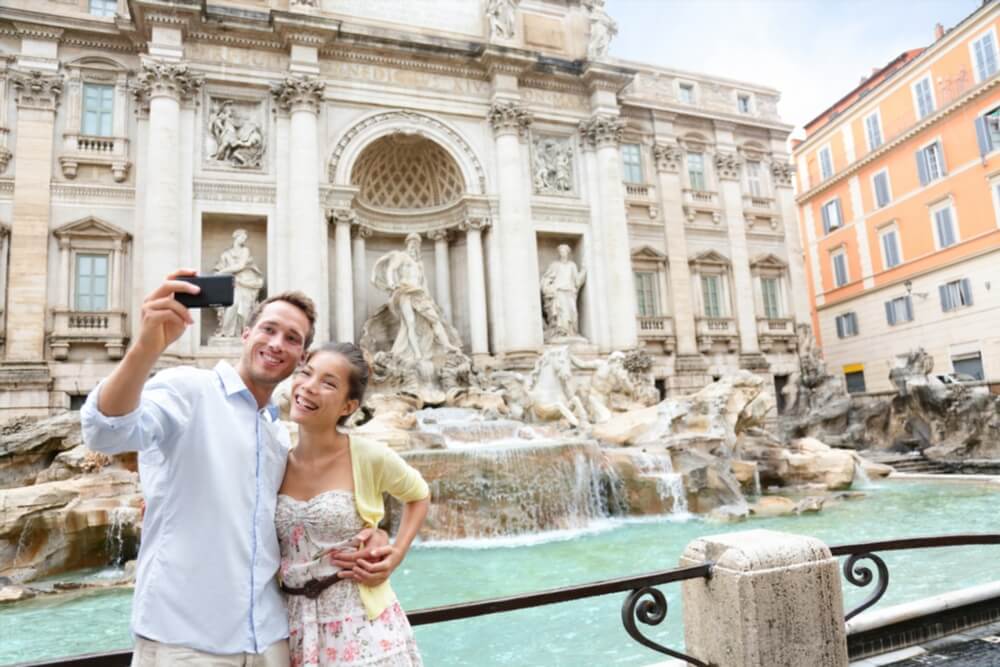
The Trevi Fountain is an absolute must-see when visiting Rome. Whether it’s for its bewitching beauty, its exceptional dimensions, its Baroque-style architecture or for superstition’s sake, the Trevi Fountain is a must-see during your stay in Rome.
How do I get to the Trevi Fountain? When should I go to the Trevi Fountain? What is the legend of the Trevi Fountain?…
Find out why you shouldn’t miss out on this visit with your family, friends or future lovers if your wish comes true!
Discover the largest and most popular fountain in Rome, and quite possibly in the whole of Italy…
A little history…
The Trevi Fountain was built in the 18th century at the request of Pope Clement XII, so that the small fountain that had previously supplied the district could be replaced by a gigantic fountain that would finally give the inhabitants access to spring water.
It was the plans of architect Nicola Salvi that caught the Pope’s eye, and work began in 1732 before being completed in 1762. Between the architect’s death and the 2 successive replacements, the project was restarted several times.
The hydraulic system was modified in 1998 to modernise it, and renovation work had to be undertaken between 2014 and 2015 following acts of vandalism.
The fountain, made of Carrara marble and travertine, is a very well-preserved Baroque work of art.
The Trevi Fountain will go down in history, becoming hugely popular the world over, thanks to Federico Fellini’s film “La Dolce Vita” and the midnight bath scene with Anita Ekberg and Marcello Mastroianni.
How to visit the Trevi Fountain
There are always lots of people at the Trevi Fountain, and as we said above, it’s very popular. But it is well worth a visit, representing a temple or triumphal arch to the glory of water, with Neptune, God of the seas, as the central figure on his shell-shaped chariot driven by winged horses.
Other sculpted figures surround Neptune: seahorses, tritons and a young girl, Trevi (who, according to legend, led the Roman soldiers in search of a watering hole to the source of the Sabine mountains in order to preserve her innocence), who gave her name to the fountain.
The figure to the left of Neptune is thought to be Agrippa’s consul (a Roman general and politician from the1st century BC); the horses, both docile and spirited, represent the moods of the ocean; the alcove statues represent Prosperity on the left and Health on the right. The other 4 statues represent the 4 seasons.
The fountain is 20 m long and 26 m high, and comprises 4 pools, 3 of which are smaller and then fill the larger one.
According to legend, lovers who drink from this fountain will always be faithful to each other.
The inscription in Latin above the fountain reads: “Clement XII, Sovereign Pontiff, embellished with grandiose refinement the Aqua Virgo aqueduct, recommended for its abundance and salubrity, in the year of grace 1735, the sixth year of his pontificate”.
The legend surrounding the Trevi Fountain
The legend has it that anyone who throws a coin into the fountain will get their wish. This tradition originated in the 1954 film “Three coins in the Fountain”, known in France as “La Fontaine aux Amours”.
But be warned, the number of coins has a meaning, so take a look:
-
1 coin means that you will return to the city of Rome,
-
2 coins means that you will fall in love with an Italian man or woman, or that true love will be found in Rome, or that a dear wish will be fulfilled,
-
3 coins means that you’ll marry the person you met in Rome within the year…
According to some ‘experts’, it’s best to throw the coins while thinking about your wish for it to work… But also to do it with your back to the fountain, with your left hand over your right shoulder or over your left shoulder with your right hand.
Don’t do it (unless you really want to): throwing 4 coins into the Trevi Fountain would mean the end of a marriage, in other words, a guaranteed divorce.
The coins, and this is no legend, are collected every Monday and redistributed by the city to charities. That’s almost a million euros a year…
How do I get to the Trevi Fountain?
It is located in Rome’s modern district, in Piazza Trevi.
1 – By metro to the Trevi Fountain
Take line A (red), get off at the “Barberini” station and walk just 500 metres to reach the fountain.
2 – By bus to the Trevi Fountain
Lines 52, 62, 63, 71 80, 83, 85, 160, 492, C3, N4, N5, N12, N25 stop at “Tritone – Fontana di Trevi”.
Price of a visit to the Trevi Fountain
The visit is free of charge.
When should I go to the Trevi Fountain?
You can go at any time of the day or night, but it’s very busy between 10am and 11pm.
So it’s best to go before 10 a.m. or after 11 p.m. if you don’t have young children with you who need to sleep early, as the fountain will be much more affordable, but it’s almost never empty of people, as popularity dictates! At night, the light shows are very pleasant to watch.
As mentioned above, you should avoid Monday mornings, because that’s when the fountain is emptied of its parts, and it’s not the best time to take souvenir photos or enjoy the sound of the water! In winter, it’s a little quieter, except in December.
Bathing and collecting coins in the Trevi Fountain is forbidden, and ignoring this advice could cost you dearly: a fine of between €40 and €240.
A final word of advice: beware of pickpocketing – bags on your back or lying on the ground are easy targets!
200 audioguided tours for cities all around the world
Download